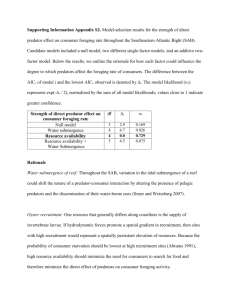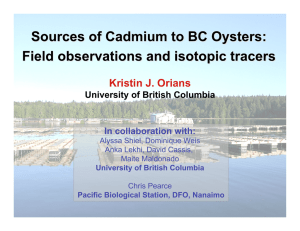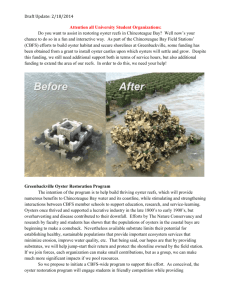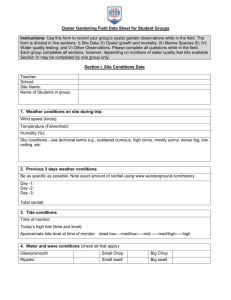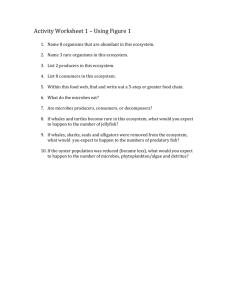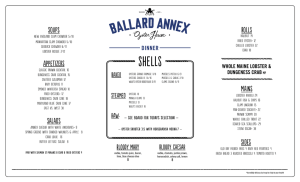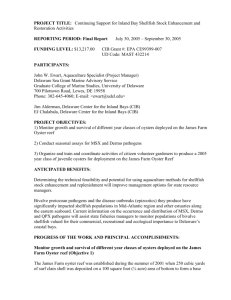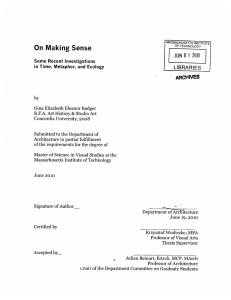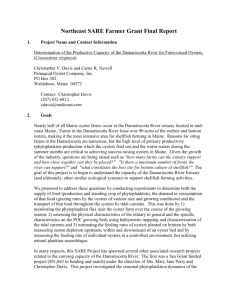ele12293-sup-0003-AppendixS3
advertisement
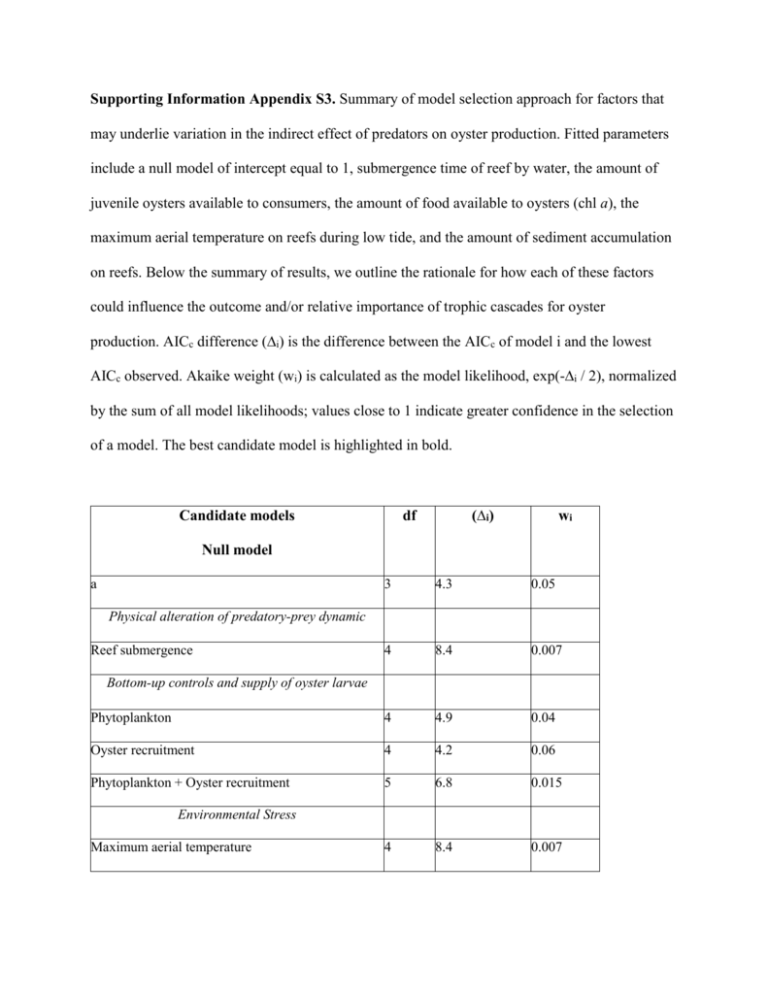
Supporting Information Appendix S3. Summary of model selection approach for factors that may underlie variation in the indirect effect of predators on oyster production. Fitted parameters include a null model of intercept equal to 1, submergence time of reef by water, the amount of juvenile oysters available to consumers, the amount of food available to oysters (chl a), the maximum aerial temperature on reefs during low tide, and the amount of sediment accumulation on reefs. Below the summary of results, we outline the rationale for how each of these factors could influence the outcome and/or relative importance of trophic cascades for oyster production. AICc difference (∆i) is the difference between the AICc of model i and the lowest AICc observed. Akaike weight (wi) is calculated as the model likelihood, exp(-∆i / 2), normalized by the sum of all model likelihoods; values close to 1 indicate greater confidence in the selection of a model. The best candidate model is highlighted in bold. Candidate models (∆i) df wi Null model a 3 4.3 0.05 4 8.4 0.007 Phytoplankton 4 4.9 0.04 Oyster recruitment 4 4.2 0.06 Phytoplankton + Oyster recruitment 5 6.8 0.015 4 8.4 0.007 Physical alteration of predatory-prey dynamic Reef submergence Bottom-up controls and supply of oyster larvae Environmental Stress Maximum aerial temperature Sediment accumulation 4 0.0 0.47 Max. aerial temperature + Sediment accumulation 5 5.4 0.03 Reef submergence + Phytoplankton 5 11.8 0.001 Reef submergence + Oyster recruitment 5 9.2 0.004 Reef submergence + Maximum aerial temperature 5 13.3 <0.001 Reef submergence + Sediment accumulation 5 7.6 0.01 Oyster recruitment + Maximum aerial temperature 5 6.3 0.019 Oyster recruitment + Sediment accumulation 5 1.2 0.26 Phytoplankton + Maximum aerial temperature 5 11.0 0.002 Phytoplankton + Sediment accumulation 5 6.3 0.02 Physical alteration & Bottom-up controls Physical alteration & Environmental Stress Resource Supply & Environmental Stress Rationale Physical alteration of predator-prey interaction: Throughout the SAB, variability in the tidal submergence of a reef could physically shift the outcome of a trophic cascade. By enhancing the presence of pelagic predators and the dissemination of their water-borne cues (Smee & Weissburg 2007), tidal submergence could physically alter the predator-consumer interaction. The bottom-up influences: Two resources that generally differ along coastlines are the supply of invertebrate larvae (food for consumers) and phytoplankton (food for oysters). If site differences in oyster larvae promote spatial variation in recruitment, then high recruitment could reduce the population-level effect of mud crab foraging at some sites by numerically compensating for any consumed oysters (Gaines and Roughgarden 1988). In this case, the presence and strength of indirect predator effects would be irrelevant for oyster population growth. With respect to phytoplankton, sites rich in pelagic phytoplankton may minimize population-level mortality oysters in the face of strong consumption by mud crabs if this resource enhances the rate at which small oysters grow into a size refuge (Kimbro et al. 2009). The influence of environmental stress: Although tidal inundation could physically alter predatorconsumer encounters, it could also create an environmental stress that affects the direct interaction between predator and consumer as well as how this outcome cascades to oysters. For instance, spatial variation in submergence could lead to some reefs with prolonged aerial exposure during low tide. In this situation, physiological stressors such as desiccation (high aerial temperature) could create high population-level mortality of oysters regardless of trophic cascades.
